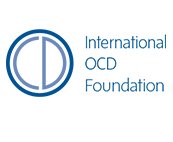Fitness
Physical activity can provide long-term health benefits as well as protection from many chronic diseases. By being active, you will burn calories that you store from eating throughout the day and it can be as easy as a brisk walk or as rigorous as running a marathon. Providing opportunities for children to be active early on puts them on a path to better physical and mental health as well. It is also well known that it is never too late to start a healthy lifestyle. By incorporating thirty minutes of physical activity into your daily life as well as healthy eating, you will experience positive health benefits and be on the path for a better future. It is important to note you should consult your physician before starting a new activity program. If you haven’t been active in a while, start slowly and build up. Always hydrate well and take appropriate breaks during exercise.
The health implications of obesity in America are startling:
- If things remain as they are today, one-third of all children born in the year 2000 or later may suffer from diabetes at some point in their lives, while many others are likely to face chronic health problems such as heart disease, high blood pressure, cancer, diabetes, and asthma.
- Studies indicate that overweight youth may never achieve a healthy weight, and up to 70% of obese teens may become obese adults.
- The cumulative effect could be that children born in the year 2000 or later may not outlive their parents.
Routine physical activity has proven to combat obesity and has many long-term benefits including:
- Improving sleep efficiency, rest and overall energy
- Improving muscle strength, overall strength and endurance and promoting strong joint development
- Prevention of chronic diseases such as heart disease, high blood pressure, stroke and diabetes
- Relieving stress, increasing energy and self esteem and increasing longevity
Aerobic activities require moderate physical effort and include, but are not limited to: biking slowly, canoeing, ballroom dancing, general gardening, walking briskly, and water aerobics. Examples of vigorous activities are basketball, jumping rope, running or bicycling on hills, soccer, swimming laps, and martial arts. Strengthening activities work all the major muscle groups – legs, hips, back, chest, stomach, shoulders, and arms. These activities include, but are not limited to: lifting weights, push-ups, sit-ups, and working with resistance bands. Bone-strengthening activities produce a force on the bones that promotes bone growth and strength. This force is commonly produced by impact with the ground. The good news: bone-strengthening activities can also be aerobic and muscle-strengthening like running, jumping rope, basketball, tennis, and hopscotch. Fitness is an important component in aiding individuals to gain optimal mental and physical wellness and health.
To learn more about child and teen obesity, please click here
Dr.Kothari is amazing! She has been my doctor for years...
I have been a patient of Dr. Kothari for over three years. She has invested her heart...
Dr. Kothari has been seeing my sons for seven years. She is a wonderful resource...
Dr. Kothari is very caring. Appointments and waiting times are great...
When we started seeing Dr. Kothari, my son was dealing with a great...
Dr. Kothari has saved my life, this I can say without reservation...

 Patient Forms
Patient Forms Videos
Videos Location
Location



























